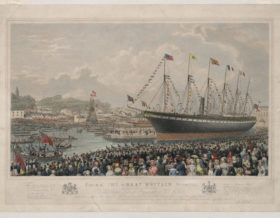Tagged with Equality
Resource : Ireland’s uprising (1798)
The move, led by the United Irishmen, to drive through a fully-fledged anti-colonial rebellion against British rule, inspired by the American and French revolutions.
Resource : Revolutionary ideas
Radical thinkers of the Age of Revolution and the seismic impacts of their extraordinary ideas about equality, rights and freedoms.
Resource : French revolution
The fevered fight for liberté, egalité, and fraternité in France, bringing with it a spate of violent and bloody wars across Europe and sending shockwaves of fear through the British establishment.
Resource : British politics in the Age of Revolution
The continued calls for the reform of British politics and representation of marginalised sectors of society, and the establishment’s unprecedented measures to restrict and suppress these ‘radical’ ideas and demands.
Resource : American revolution
How the American colonies defied Britain, one of the mightiest powers on earth, to secure their independence and form a new federal republic – the United States of America.
Resource : Bust of Jean-Jaques Dessalines (1758 – 1806)
Jean-Jacques Dessalines (1758 – 1806) was born into slavery in St Domingue (now Haiti) on the Caribbean island of Hispaniola. Following a mass uprising of enslaved people of African origin – the only successful slave revolt in history – and a series of bloody battles and reprisals, Dessalines eventually became the first ruler of Haiti, the world’s first modern independent ‘black’ republic. The events in St Domingue became known as the Haitian Revolution.
Resource : Toussaint Louverture, Chief of the French Rebels in St Domingo
Toussaint Louverture (1743 – 1803) was born into slavery in St Domingue (now Haïti) on the Caribbean island of Hispaniola. In 1791 he led the first – and only – successful uprising of enslaved Africans. Although he died before the revolution spawned a nation, in 1804 Haiti became the first independent ‘black’ republic and contributed to the decline of the transatlantic slave trade. The events in St Domingue became known as the Haitian Revolution. This and other depictions of Louverture (in print and portraiture) reflected the high levels of fascination and respect expressed around the world for a radical figure who had refused to yield and who surmounted all foes in the revolutionary contests.


